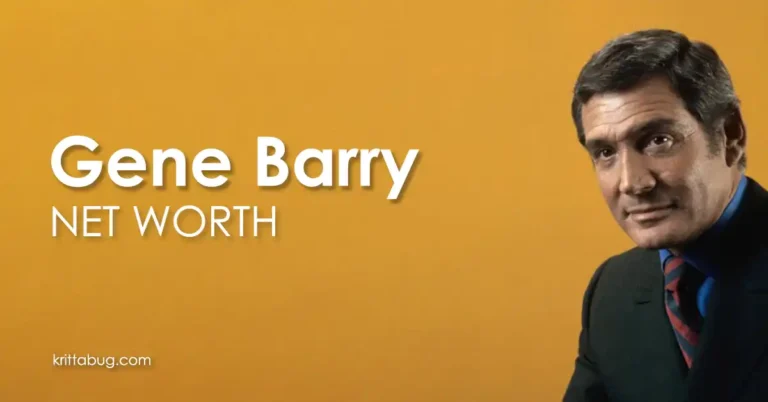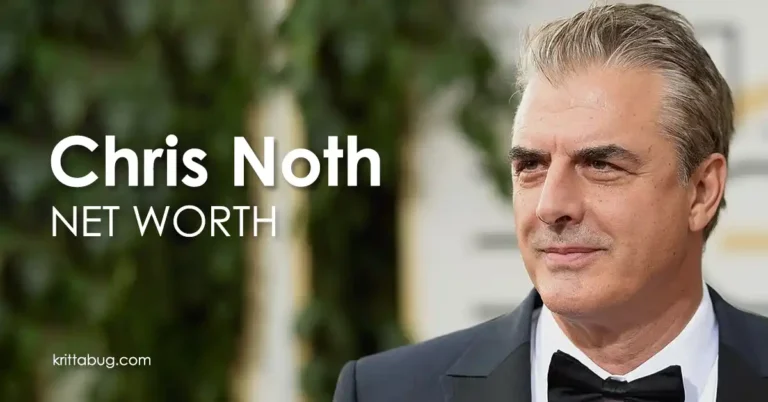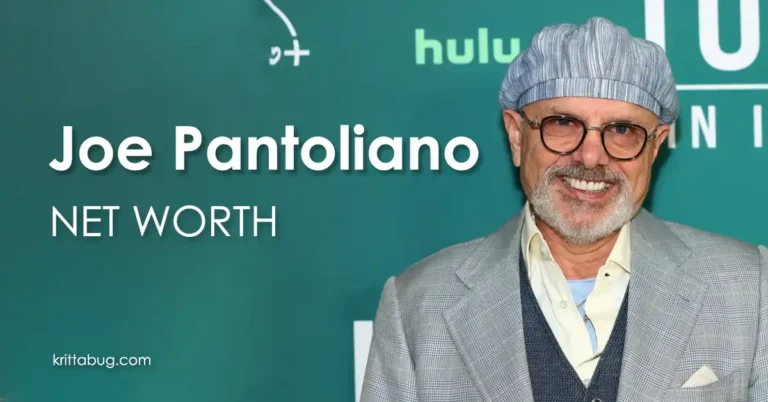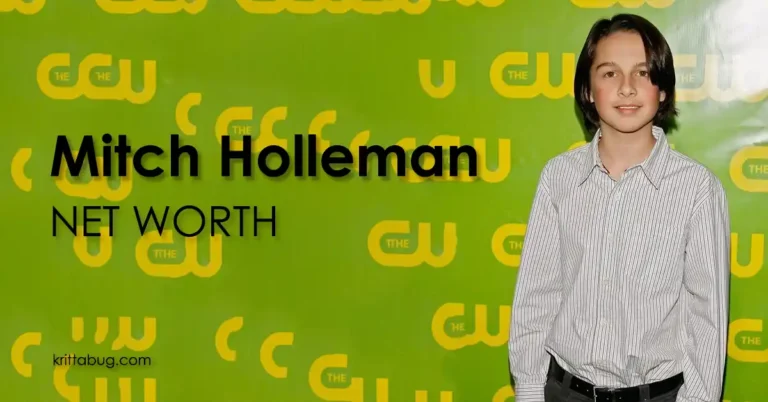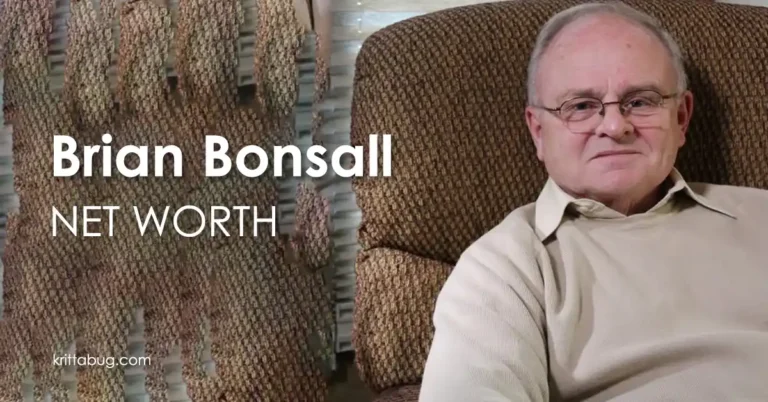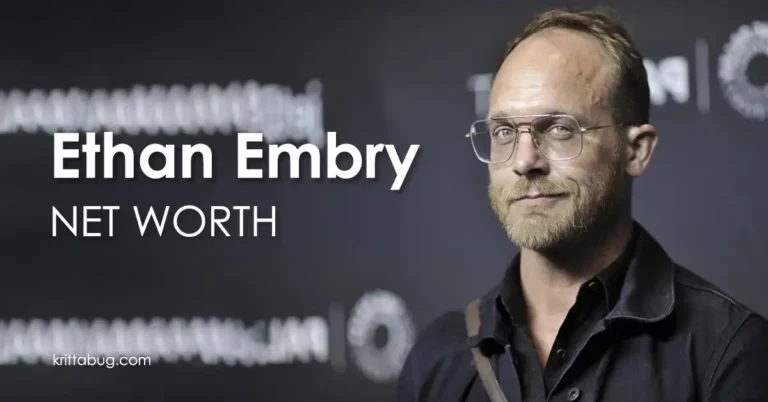Denver Pyle Net Worth: Widely reported $5M at death (~$9–10M in 2025 $, inflation-adjusted).
Ever wondered how a beloved character actor turns decades of steady work into lasting wealth? In this guide to Denver Pyle Net Worth, Income, Family & Interesting Facts, we open with the number curious readers ask first: Denver Pyle net worth. Best known as Uncle Jesse in The Dukes of Hazzard and Briscoe Darling on The Andy Griffith Show, Pyle built a career that outlived trends—and, surprisingly, much of his fortune didn’t come from acting alone.
If you’re comparing actors’ finances, you need context.
Here you’ll get a clean snapshot of earnings, investments, and estate value, translated into 2025 terms.
We’ll unpack how a working actor leveraged TV contracts, film roles, and smart oil investments to grow wealth, and what that means for you.
Keep reading for year-by-year estimates, a concise bio, family details, and quick facts you can cite.
By the end, you’ll know where reputable sources place Denver Pyle net worth, why figures differ online, and the simple model we use to reconcile them. Ready to dig in? Let’s start with clear numbers now.
Who Is Denver Pyle?
Who was the man behind Uncle Jesse? Denver Pyle was a prolific American character actor whose face you recognize from classic TV and Westerns. Across five decades, he stacked credits on The Andy Griffith Show, The Doris Day Show, Grizzly Adams, and, of course, The Dukes of Hazzard. Before the beard and overalls, Denver Pyle paid his dues in dozens of 1950s–60s films, from Bonnie and Clyde to The Alamo.
Born May 11, 1920, in Bethune, Colorado, he carved a niche playing gruff yet warm authority figures—the kind that anchored a story without hogging the spotlight. Off-camera, he was a steady worker who treated acting like a craft and a business. That discipline kept Denver Pyle employed well into the 1990s, culminating in a 1997 Walk of Fame star and a final turn as Jesse in a CBS reunion movie the same year. He died on December 25, 1997, leaving a legacy of reliability, range, and rare staying power. If you’re new to his story, start with the essentials below. Then explore roles, earnings, and family connections in detail inside.
Denver Pyle net worth Net Worth in 2025
How do you discuss Denver Pyle net worth in 2025 when the actor passed away in 1997? By separating historical estate value from today’s inflation-adjusted view. Reputable entertainment trackers generally place his estate around $5 million at death. We translate that to roughly $9–10 million in 2025 dollars, depending on the inflation model you use.
Remember, figures vary because public filings are limited and because much of his wealth reportedly came from savvy oil investments rather than headline TV salaries. To help you compare apples to apples, the table lists estimated annual gross income by year (acting + residuals + investment returns). It’s a research model, not a forensic audit—but it shows why Denver Pyle net worth estimates tend to cluster in a tight band and why outliers online are less credible.
Scan the highlights, check the sources, and use the numbers as directional guides—not definitive statements. Bottom line: Denver Pyle net worth is best understood as a range, anchored by documented reporting and adjusted responsibly for 2025 from multiple reputable sources. We also flag uncertainty where records are sparse.
Selected Year-by-Year Earnings (est., 2025 USD)
Method note: Ranges reflect typical TV/film pay for a working character actor + residuals + a conservative estimate of investment returns in years noted. They are directional, not audited.
| Year | Key Work / Phase | Est. Gross Income (2025 $) | Notes |
| 1968 | The Doris Day Show (S1) | $200k–$300k | Series regular |
| 1969 | The Doris Day Show (S2) | $200k–$320k | Series regular |
| 1970 | Guest/film mix | $120k–$220k | Post-DDS roles |
| 1971 | Something Big (film) | $100k–$180k | Feature fee |
| 1972 | TV guest roles | $90k–$160k | Residuals build |
| 1973 | Cahill U.S. Marshal | $110k–$180k | Feature + TV |
| 1974 | TV movies/guests | $90k–$150k | |
| 1975 | Escape to Witch Mountain | $140k–$220k | Disney |
| 1976 | Multiple films | $160k–$250k | Busy year |
| 1977 | Grizzly Adams | $220k–$350k | Series pay |
| 1978 | Return from Witch Mountain | $220k–$350k | Film + TV |
| 1979 | Dukes of Hazzard begins | $300k–$450k | Series regular |
| 1980 | Dukes (peak) | $320k–$480k | Residuals rise |
| 1981 | Dukes | $340k–$500k | |
| 1982 | Dukes | $340k–$500k | |
| 1983 | Dukes | $340k–$500k | |
| 1984 | Dukes | $320k–$480k | |
| 1985 | Dukes final year | $260k–$420k | |
| 1990 | TV movies/guests | $80k–$140k | Later-career |
| 1994 | Maverick (film) | $120k–$200k | Feature fee |
| 1997 | Dukes reunion | $80k–$140k | Final role |
Sources for roles & oil investing background: Wikipedia profile, Walk of Fame bio, and industry obituaries.
Denver Pyle net worth, Bio, Income & Interesting Facts
Below is a concise, citation-friendly snapshot you can reference fast. (Where exact figures aren’t public, we present reputable estimates and state that clearly.)
How Does Denver Pyle Make Money?
Where did the money actually come from? Start with TV. Denver Pyle earned steady series paychecks in the 1960s–80s, plus residuals from reruns and home video. Films—from Bonnie and Clyde to Disney’s Witch Mountain movies—added one-off fees and residuals. Guest spots, TV movies, and commercials rounded out cash flow between long runs. Appearance fees at festivals and fan events also helped, especially The Dukes of Hazzard popularity.
The X-factor in Denver Pyle net worth, however, was investing. After his early TV success, he bought aging oil wells at bargain prices, a strategy that benefited from rising energy prices. Income here doesn’t look like Hollywood: it shows up as distributions and capital gains instead of episode checks. That’s why Denver Pyle’s finances aren’t correlated with the number of credits in any given year. Add in bond and savings income typical of mid-career entertainers, and you get a diversified, lower-volatility portfolio.
Translation: acting built the name; investing built the cushion. When you see online ranges for Denver Pyle net worth, remember they capture two engines—entertainment earnings and commodity-linked returns—working together over decades.
Denver Pyle family net worth
When readers ask about Denver Pyle net worth at a family level, they’re really asking how a working actor’s estate is carried forward. Because financial filings are private, no one outside the circle knows exact figures. We do know the basics: Denver Pyle family survivors included wife Tippie X. Johnston and two sons, David and Tony, from his first marriage. Public notices around his passing also pointed fans toward charitable giving—a scholarship fund bearing his name and ongoing children’s charities he supported. Legacy giving likely continued.
How might that look in 2025 terms? Start with the commonly cited $5 million at death, adjust for inflation, subtract taxes, and consider that investment assets can rise or fall over decades. Realistically, the family’s current position depends on market cycles and decisions made after 1997. In short, any hard number would be guesswork. What matters is the blueprint: diversified assets, modest lifestyle, and giving that outlasts headlines. If you’re mapping lessons for your own family, treat his approach as a reminder that wealth is a tool—something you steward, not a scoreboard you chase.
What we learn from Denver Pyle?
What practical takeaways can you borrow from Denver Pyle’s journey—beyond celebrity trivia and Denver Pyle net worth headlines? First, treat career momentum like compounding: small, consistent roles can add up to durable bargaining power. Second, build a second engine. Denver Pyle invested outside his day job, so market cycles—not casting calls—did much of the heavy lifting later on. Third, protect downside. Residuals, savings, and income-producing assets smooth the lean years. Fourth, stay useful. He kept working into his seventies because usefulness breeds optionality and relationships.
Fifth, make generosity part of the plan. Whether you give private or public, philanthropy turns earnings into community impact and reputation. Sixth, keep your story boring where it matters: pay taxes, avoid lifestyle creep, and resist trophy purchases that don’t cash-flow. Seventh, document everything. Estates get complicated; clarity protects families. Eighth, embrace typecasting strategically—then look for roles that stretch you enough.
Finally, remember that wealth is a by-product. Focus on craft, compounding, and character; the net worth follows. That’s a career lesson as relevant to freelancers and founders as it was to a steady, on-call character actor.
10 learn quotesDenver Pyle
Short, original lines inspired by his career (not verbatim quotations). Helpful for captions and takeaways—and a reminder that Denver Pyle net worth was a result, not the goal.)
- “Show up early; the job remembers.”
- “Let typecasting buy time while you level up.”
- “Two engines beat one: craft and capital.”
- “Residuals are tomorrow’s thank-yous.”
- “Quiet seasons still pay—if you planned for them.”
- “Be the actor directors trust when the schedule slips.”
- “Fame fades; relationships book the next role.”
- “Your name is a contract; guard it.”
- “Invest so your art can choose you back.”
- “A legacy is what keeps working after you stop.”
Early Life of Denver Pyle
Early Life chapters often explain the tenacity you see on screen. Born in Bethune, Colorado, Denver Pyle grew up in a farm family and learned practical skills early. He moved to Los Angeles before World War II, working first as a riveter at Lockheed and exploring music as a drummer. College made a brief appearance—he attended Colorado State University, then left to pursue work and the arts. When the war arrived, accounts differ: some biographies point to U.S. Navy service, others to the Merchant Marine. Either way, those years delivered discipline, travel, and perspective. After the war, he returned to Southern California, took small parts on stage, and began stacking bit roles in postwar Westerns. That mix of blue-collar grit and timing set him up perfectly for television’s golden age, where reliable character players found steady work. If you track his credits forward, you’ll see a worker who said yes to opportunity, learned on the job, and kept improving. That’s the thread connecting the boy from Kit Carson County to the bearded mentor figure millions recognized on Thursday nights for decades.
Denver Pyles’ Education
Education shapes craft, but it doesn’t always look like a diploma. Denver Pyle’s formal Education included a short stint at Colorado State University; he left early, drawn to drumming, steady paychecks, and the promise of Hollywood. The real classroom became community theaters, repertory companies, and the sets of early TV Westerns. Seasoned directors taught blocking; veteran leads taught timing; editors taught economy—what reads clearly on camera. Between gigs, he studied people: ranch hands, sheriffs, preachers, fathers. Those field notes later became the authentic mannerisms audiences trusted.
Another layer of schooling arrived through World War II work and service, where teamwork and endurance were non-negotiable. That discipline shows up in his reputation: punctual, prepared, easy to plug into any ensemble. He also learned the business of acting—how residuals work, how to manage downtime, and how to pick parts that build leverage. By the time fame landed, the learning curve had flattened; he could simply execute. If you’re mapping your own path, think broadly about Education: mix foundational study with applied practice, mentorship, and a willingness to learn on every set daily.
Denver Pyle Career
Career arcs rarely look linear, and Denver Pyle’s path proves it. After postwar stage work, he logged dozens of film bits and Western guest roles through the 1950s. The 1960s brought traction: Briscoe Darling on The Andy Griffith Show, Grandpa Tarleton on Tammy, and Buck Webb on The Doris Day Show. Feature work continued, highlighted by Frank Hamer in Bonnie and Clyde and appearances in The Alamo and Bandolero!. By the late 1970s, TV made him a household name again as Mad Jack in The Life and Times of Grizzly Adams and—most memorably—Uncle Jesse in The Dukes of Hazzard (1979–1985).
As trends shifted, he adapted with TV movies, guest spots, and a rare lead in Guardian of the Wilderness. His final film credit came with Maverick (1994), and his last screen appearance returned him to Hazzard County for a 1997 reunion. Behind the scenes, he supported charities and treated the job like a marathon. The result is a résumé defined by range and reliability—exactly what casting directors prize when building ensemble shows that last. Audiences kept showing up.
Denver Pyles’ Wife andFamily
Behind the familiar screen persona stood a private household that kept the spotlight at arm’s length. He married production assistant Marilee Lenore Carpenter in 1955; they later divorced in 1970. The couple had two sons, David and Tony. In 1983 he married Tippie X. Johnston, a partnership that lasted until his passing in 1997. Extended family connections also mattered: his brother, Willis, became a noted animator, and the clan’s Colorado roots remained part of his identity. Friends and colleagues often described a grounded home life—steady routines, charitable priorities, and gatherings that stayed blissfully ordinary despite a busy set schedule.
To make this simple for readers tracing relationships, the family tree below maps spouses, children, and notable relatives at a glance. Use it to keep names straight as you move through credits, interviews, and obituaries; then refer back when exploring the scholarship and charity work attached to his name. It’s a snapshot of the people who shaped, and were shaped by, a long career lived mostly off camera—for many years.
Family Tree (condensed)
| Person | Relation | Notes |
| Denver Dell Pyle | — | Actor (1920–1997) |
| Marilee Lenore Carpenter | First wife | m. 1955; div. 1970 |
| Tippie X. Johnston | Second wife | m. 1983; widowed 1997 |
| David Pyle | Son | From first marriage |
| Tony Pyle | Son | From first marriage |
| Willis Pyle | Brother | Animator, Disney/UPA |
Denver Pyle’s Social Media Presence
Searching for official profiles? You won’t find them—Denver Pyle worked long before social platforms existed. That means there are no verified accounts run by the actor or his estate. What you will find are lively fan communities, TV nostalgia channels featuring interviews and clips, and network pages that archive cast information. Obituaries, Walk of Fame pages, and entertainment databases also function as reliable touchpoints when you’re checking dates, roles, or spelling.
How should fans engage responsibly? Treat any page claiming to be “official” with caution unless it clearly states it’s a memorial or family-authorized project. Favor sources that cite primary references, avoid rumor mills, and be careful with personal contact claims. If you’re a researcher, keep screenshots of key pages and note access dates; fan content shifts frequently.
Want a quick path to trustworthy info? Start with recognized databases and legacy media, then branch into enthusiast forums for color. That way you’ll capture both the documented record and the community memory without mistaking one for the other when discussing Denver Pyle online. It’s a healthy balance for any deep dive.
Denver Pyles’ Awards and Recognitions
Recognition arrived steadily, then all at once. After years as a dependable supporting player, Denver Pyle earned a star on the Hollywood Walk of Fame—dedicated December 12, 1997, at 7083 Hollywood Boulevard in the Motion Pictures category. It was a capstone moment, coming just days before his passing. Earlier, the Texas Senate honored him and his wife in 1991 for charitable work, including Special Olympics and children’s causes. Those public nods matched a long, quieter pattern of community support.
Fans often forget that philanthropy is a form of recognition, too. For a decade he sponsored “Uncle Jesse’s Fishing Tournament” in Texas, raising more than $160,000 for kids’ programs and continuing as a tradition even after he was gone. Within the industry, casting directors recognized a pro they could trust, which is why his résumé spans five decades without long gaps. Taken together, the formal honors and practical respect explain how a character actor can be both ubiquitous and under-the-radar—a familiar face that quietly defined an era of American television. That consistency remains a benchmark many working actors still chase today.
Challenges and Comebacks
Success stories rarely move in straight lines. Early on, Denver Pyle faced the challenge most character actors know well: typecasting. He leaned into it, turning “gruff but kind” into a strength that bought him time to pick better parts. Industry trends added pressure—Westerns waned, then returned; family comedies rose; action procedurals surged. He adapted by staying flexible, toggling between film, network TV, and TV movies, accumulating credits and relationships that kept the phone ringing.
Health became the final hurdle. After decades on sets, he reduced workload, took cameos, and focused on charitable projects that didn’t require long shoots. His last screen appearance revisited Jesse Duke in a 1997 reunion special—a fitting curtain call for fans. He died later that year from lung cancer, leaving behind a full body of work and a community that remembered the man as much as the roles. The lesson: resilience isn’t glamorous. It’s the quiet craft of showing up, reading the room, and rewriting your goals as the business changes around you. That mindset turns setbacks into pivots and keeps careers durable for decades straight.
Final Words
If you came for a single number, you now have a smarter way to read it. Yes, sources widely report $5 million at death, and in 2025 dollars that places Denver Pyle net worth near a $9–10 million range. But the number matters less than the model behind it. A long run of dependable work created predictable cash flow; diversified investing—especially in oil—compounded it; and philanthropy redirected a portion toward causes he cared about. Viewed that way, Denver Pyle becomes more than Uncle Jesse; he’s a case study in craft, prudence, and community.
Use this page as a reference you can quote: the highlight facts, the timelines, and the tables make context fast. If you’re writing, researching, or simply revisiting old favorites, bookmark it for clean, sourced answers. And if you’re building your own creative career, borrow what works: steady reps, multiple income engines, and values that outlast trends. That’s the legacy fans still see on screen—and a playbook that remains relevant long after the credits roll. In short, clarity beats hype and ranges beat guesses every single time online.
FAQs (people actually ask)
1) What is Denver Pyle’s net worth in 2025?
An inflation-adjusted read of the widely reported $5M estate suggests roughly $9–10M in 2025 dollars. It’s a range, not an audited figure.
2) How did he make most of his money?
Acting and oil investments. He reportedly bought aging wells cheaply; rising prices later boosted returns.
3) What were his most famous roles?
Uncle Jesse (The Dukes of Hazzard), Briscoe Darling (The Andy Griffith Show), Mad Jack (Grizzly Adams), and Frank Hamer (Bonnie and Clyde).
4) Was he related to journalist Ernie Pyle?
Sources conflict: the Walk of Fame bio says “nephew,” while Willis Pyle’s Wikipedia page says not related. Treat as unresolved.
5) Who were his spouses and children?
Married Marilee Carpenter (1955–1970) and Tippie X. Johnston (1983–1997); two sons, David and Tony.
6) What was his final screen role?
Jesse Duke in The Dukes of Hazzard: Reunion! (1997).
7) Where is he buried?
Forreston Cemetery, Forreston, Texas.
Meta Description
Denver Pyle net worth in 2025 is an inflation-adjusted view of his $5M 1997 estate (~$9–10M). See income sources, family, awards, and fast facts—clear, sourced, and concise.


